Air travel is a modern-day wonder that lets us do awesome things that before were unfathomable. Like wake up in NYC at 6 a.m. and be on the beach in Miami before noon. Yet despite all its glory, flying kind of sucks. I fly probably five or six times a year, and I’ve never once gotten off a flight and thought, Wow, that was comfortable! Unless you’re shelling out the big bucks for first class every trip, chances are your flight experiences are the same as mine: cramped and uncomfortable, with a side of neck pain and butt numbness.
The one thing I have found that helps to mitigate this a bit? Moving a little before and after my flight. Now I’m not talking full-on workout. I for one am in the camp that enjoys the rush of getting to the airport as late as possible (I’m often in the security line when my flight begins to board). I can’t imagine a scenario in which I’d have time to do a full workout right before I head to the airport. Plus it’s not really a good idea to do a tough workout right before you’re about to sit for hours, says Albert Matheny, M.S., R.D., C.S.C.S., cofounder of SoHo Strength Lab and nutritional advisor to Promix Nutrition. “Do something that gets you moving,” he suggests, “but don’t push anything to max right before travel. Airplanes are no place to recover.”
There are a few reasons for that, but the main one is that blood flow after a hard workout is important to give your muscles the nutrients they need to repair themselves and flush out various waste products that develop as a by-product of exercise. Sitting for a long time immediately after a hard workout decreases blood flow and can slow down recovery a bit, Matheny says. That, combined with the altitude, dry air (hello, dehydration), and increased stress overall that many of us feel when flying, creates a subpar recovery environment and makes it more likely you’ll feel more stiff and sore, adds Matheny.
Which brings us to your best preflight option: light stretching and bodyweight exercises. “One of the best things you can do prior to a flight is to open your body up and get your blood flowing,” Matthew Kite, C.S.C.S., director of education of D1 Training, tells SELF. Specifically “mobilizing your hips and lower back the morning of or right before flying will help prevent those aches and stiffness that stem from flights.”
New York City–based certified personal trainer Bianca Vesco notes that she doesn’t do well on planes because she’s not used to sitting down for so long. “My spine locks up and I have a ton of low-back pain from tight hips.” Because of this, she focuses on spinal and hip mobility work before and after a flight. “Yoga is a must.”
Every expert that I spoke with notes that the key is to get in some light movement both before and after your flight if you can. “I’m a big believer in somehow moving after flying,” says Ava Fagin, certified personal trainer and fitness instructor at BodySpace Fitness in NYC. “I’m not picky about what type of movement that is, but I’ve recently started to go on a short run after a flight to get the blood flowing and it feels amazing!” (Before a flight, she suggests hydrating to prep for the dry airplane air.)
Here, Vesco, Fagin, and other trainers share their go-to pre and postflight exercises to stave off soreness throughout a grueling in-flight sitting marathon.
Quick note: You’ll notice below that some of the movements come with a suggestion for pre or postflight, but others don’t. While some of the trainers I spoke to differentiated between what they like to do before versus after, many didn’t differentiate, saying that they do the same things both before and after flying. You should choose which movements from this list you want to do when you want to do them, based on what feels best for your body. There’s really no right or wrong way!
-
Pinterest
Savanna Ruedy1 Resistance Band Squat
“Pro tip: Invest in a resistance band,” Louise Bilek, certified personal trainer and personal training support specialist of Anytime Fitness, tells SELF. “They are lightweight and don’t take up much luggage space.” Squats are particularly great preflight because they work the muscles that you are about to sit on, she says.
- Stand with your feet slightly wider than hip-width apart, a looped resistance band around your quads just above your knees, toes slightly turned out, hands clasped in font of your chest (as shown) or arms resting at your sides.
- Engage your core and keep your chest lifted and back flat as you shift your weight into your heels, push your hips back, and bend your knees to lower into a squat.
- Drive through your heels to stand and squeeze your glutes at the top for 1 rep.
- If your knees are caving in, actively push out against the band as you bend your knees to keep them tracking directly over your feet.
- Do 8–10 reps.
-
Pinterest
Katie Thompson2 Resistance Band Bent-Over Row
“Pulling movements are great for strengthening our upper backs and assisting with good posture. While sitting on an airplane we are often slouched over or have a rounded back,” Bilek says. You can also do this exercise without a band. “Do this same movement pretending you are holding onto the band and concentrate on squeezing your shoulder blades together as you pull the imaginary band. Hold this position briefly before bringing arms back to the starting position.”
- Stand with both feet on a resistance band about hip-width apart. Hold one end in each hand by your sides, palms facing in toward each other. Bend your knees slightly and hinge forward at the hips, keeping your back flat, arms straight, and hands under your shoulders.
- Bend your elbows to pull the band toward your chest, keeping your elbows close to your body (they should skim your sides).
- Slowly straighten your arms and lower your hands back to starting position. That’s 1 rep.
- Do 8–10 reps.
Most Popular
- 5 Less Obvious Signs of Seasonal Depression You Should Definitely Pay Attention To
By Maggie O’Neill
- 42 Creative Valentine’s Day Gifts for Guys
By Sarah Madaus
- Just Some Fun Sex Toys You and Your Partner Will Love
By Gabrielle Kassel
-
Pinterest
Katie Thompson3 Glute Bridge
“Bridges strengthen the low back while stretching the hip flexors,” Bilek explains. “Sitting leads to weak, sore backs, and this exercise can help reduce back pain leading to a more comfortable flight.”
- Lie on your back with your hands at your sides, knees bent, and feet flat on floor hip-width apart.
- Squeeze your glutes and abs and push through your heels to lift your hips a few inches off the floor until your body forms a straight line from your shoulders to your knees.
- Pause and squeeze your glutes at the top, then slowly lower your hips to return to the starting position. This is 1 rep.
- Do 8–10 reps.
-
Pinterest
Katie Thompson4 Resistance Band Pull-Apart
This move is easy to do anywhere and helps improve posture and back stabilization, say Bonnie Micheli and Tracy Roemer, cofounders of Shred415.
- Stand with your feet hip-width apart, holding a resistance band with both hands in front of your body at shoulder height. Grip the band so that there’s about a foot in between your hands. This is the starting position.
- Slowly pull the band apart so that your hands move to your sides, keeping them at shoulder height.
- Bring your hands in a controlled movement back to the starting position. This is 1 rep.
- Do 8–10 reps.
-
Pinterest
Katie Thompson5 Inchworm
“When limited on time, the more muscles working at once the better, making the Inchworm a must. This movement helps to strengthen the core and shoulders while stretching out the back of our legs which often feels refreshing,” Bilek says.
- Stand tall with your feet hip-width apart and arms at your sides.
- Bend at your waist and place your hands on the floor.
- Walk your hands forward to come into a high plank with your hands flat and wrists stacked under your shoulders, and your core, quads, and butt engaged. Pause for a second.
- Walk your hands back to your feet and stand to return to start. That’s 1 rep.
- Do 5–8 reps.
Most Popular
- 5 Less Obvious Signs of Seasonal Depression You Should Definitely Pay Attention To
By Maggie O’Neill
- 42 Creative Valentine’s Day Gifts for Guys
By Sarah Madaus
- Just Some Fun Sex Toys You and Your Partner Will Love
By Gabrielle Kassel
-
Pinterest
Katie Thompson6 Jumping Jack
“Jumping gives our heart rate a boost and gets the blood flowing,” says Bilek.
- Stand with your feet together, core engaged, and hands at sides.
- Jump your feet wider than hip-width apart, and bring arms up to clap hands overhead.
- Jump your feet back together and bring your arms to your sides to return to starting position.
- Do 10, or try for speed and do as many reps as you can in 20 seconds.
-
Pinterest
Katie Thompson7 Bird Dog
Bird Dogs are great for activating the core and lower-back, two areas that can use a little jumpstart postflight. Bilek suggests using a prop like a chair and elevating the movement, “which makes it a little easier to focus on engaging the core and back muscles that have been inactive while in flight.”
- Start on your hands and knees in tabletop position with your wrists stacked under your shoulders and your knees stacked under your hips. This is starting position.
- Extend your right arm forward and left leg back, maintaining a flat back and keeping your hips in line with the floor. Think about driving your foot toward the wall behind you.
- Squeeze your abs and return your arm and leg to starting position. This is 1 rep.
- Do 8–10 reps. Then repeat with the other arm and leg.
-
Pinterest
Katie Thompson8 Cat Cow
“After sitting on a flight, this stretch assists in bringing movement back to the spine in a safe and effective way,” Callie Gullickson, certified personal trainer and instructor at Rumble Boxing, tells SELF. “Flexion and extension of the spine will stretch the hips and abdomen as well. This one is my favorite because you can get lost in the movement—it feels that good.”
- Start on all fours with your shoulders over your wrists and hips over knees.
- Take a slow inhale and on the exhale round your spine and drop your head toward the floor (this is the cat posture).
- Inhale and lift your head, chest, and tailbone toward the ceiling as you arch your back for cow. This is 1 rep.
- Do 8–10 reps.
Most Popular
- 5 Less Obvious Signs of Seasonal Depression You Should Definitely Pay Attention To
By Maggie O’Neill
- 42 Creative Valentine’s Day Gifts for Guys
By Sarah Madaus
- Just Some Fun Sex Toys You and Your Partner Will Love
By Gabrielle Kassel
-
Pinterest
Katie Thompson9 Quadrupled Thoracic Rotation Stretch
“On airplanes we tend to get in the most comfortable position possible, which doesn’t always mean we’re using great posture. We round over, tilt our heads on the window, or if you’re me you’re oddly flexible enough to rest your head on your arms on top of the tray table in front of you,” Fagin says, which is why she suggests opening up your shoulders and spine—specifically the thoracic spine or mid-back—after a flight to help prevent discomfort.
- Start on all fours, with your hands stacked under your shoulders and your knees stacked under your hips. Engage your core and maintain a flat back.
- Place your left hand on the back of your head so that your elbow points out to the left side. Rest the hand lightly—don’t put pressure on your head or neck. This is the starting position.
- Slowly rotate your head and shoulder toward your right hand on the floor.
- Then reverse the motion and rotate to the left and up so your elbow points toward the ceiling. Hold for a few seconds.
- Return to starting position. Continue this movement for 30 seconds, and then repeat on the other side.
-
Pinterest
Katie Thompson10 Bulgarian Split Squat
Morit Summers, certified personal trainer and owner of Form Fitness Brooklyn, recommends doing Bulgarian split squats after flying. “These not only have a ton of glute activation but they also can help open up the hip flexors, which are probably tight from sitting on a plane,” she says. (Note: You can do these without any weights. Adding dumbbells is cool if you have them, but simply using your bodyweight is great too.)
- Stand with your back to a bench or similar elevated surface. With your left foot on the floor a few feet in front of the bench, place the top of your right foot on the bench, shoelaces down. Place your hands on your hips or let them rest down by your sides (basically what you see here, just minus the dumbbells.)
- Brace your core and bend your knees to lower down into a split squat. Your left knee should ideally form a 90-degree angle so that your thigh is parallel to the ground, and your right knee is hovering above the floor. Quick position check: Your left foot should be stepped out far enough that you can do this without letting your left knee go past your left toes—if you can’t, hop your left foot out a bit farther away from the bench.
- Driving through your left heel, stand back up to starting position. This is 1 rep.
- Do 8–10 reps on one side and then repeat on the other side.
-
Pinterest
Katie Thompson11 Downward Facing Dog
Downward Dog stretches your spine and hamstrings, says Vesco. “It really helps to keep soft knees and heels off the floor unless you have great ankle flexibility. The softer your knees are, the more you can press into your hands and lengthen your spine as you send your hips to the ceiling.”
- Start on your hands and knees with your hands stacked under your shoulders and knees under your hips.
- Spread your hands wide and press your index finger and thumb into your mat.
- Lift your tailbone and press your butt up and back, drawing your hips toward the ceiling. Straighten your legs as best as you can and press your heels gently toward the floor.
- Your head should be relaxed between your arms, facing your knees. Your back should be flat.
- Hold for 30 seconds.
Most Popular
- 5 Less Obvious Signs of Seasonal Depression You Should Definitely Pay Attention To
By Maggie O’Neill
- 42 Creative Valentine’s Day Gifts for Guys
By Sarah Madaus
- Just Some Fun Sex Toys You and Your Partner Will Love
By Gabrielle Kassel
-
Pinterest
Katie Thompson12 Skater Hop
“Skaters are a functional movement, meaning many muscles are working at once. Performing this with speed will increase your heart rate, re-energizing you postflight,” says Bilek.
- Stand with your feet hip-width apart. Lift your right leg and jump to the right. Let your left leg straighten and follow.
- As you land on your right foot, swing your left foot behind you but keep it off the floor. Swing your left hand in front of your body as your right arm swings behind your back.
- Swing your left leg back to the left and jump, landing lightly on your left foot and allowing your right foot to swing behind you. Swing your right arm in front of your body as your left arm swings behind.
- Continue to skate from side to side for 20 seconds, or more if you’re feeling up to it.
-
Pinterest
Katie Thompson13 Standing Bent-Over Calf Stretch
“When we sit, our knees are in a flexed position, and it’s common for your hamstrings to contract and tighten up,” says Fagin.
- Stand with your feet staggered.
- Bend your back knee and keep your front knee straight as you fold forward and grab onto your front foot underneath your toes.
- Pull up gently on your toes, feeling the stretch in your calf.
- Hold for about 30 seconds, then repeat on the other side.
-
Pinterest
Katie Thompson14 Chest Stretch
“Chest openers are a huge staple in my practice,” Nicks says. We are constantly looking down at our phones so especially after being crammed on a plane sleeping in funky positions or looking down at technology it’s important that we do chest openers.”
- Start standing tall, fingers interlocked behind you near your butt.
- Keeping your back straight and shoulder blades together, push your arms up until you feel the stretch in your pecs.
- Hold for about 30 seconds.
Most Popular
- 5 Less Obvious Signs of Seasonal Depression You Should Definitely Pay Attention To
By Maggie O’Neill
- 42 Creative Valentine’s Day Gifts for Guys
By Sarah Madaus
- Just Some Fun Sex Toys You and Your Partner Will Love
By Gabrielle Kassel
-
Pinterest
Katie Thompson15 Forward Fold
“Postflight my back and neck are usually tight so I try to do cat-cow, and forward fold and plow pose,” Rachel Nicks, a founding trainer at Mirror, tells SELF. She also notes that during the actual flight, she stays moving by writing the alphabet with her feet, giving herself a neck massage, and doing some light stretching in place. “I reach up overhead, interlace my fingers, and do side bends. I also try to do a seated cat and cow stretch, hamstring stretches, and seated figure four,” Nicks says.
- Stand with your feet shoulder width apart.
- Straighten your legs out as much as you can and let your torso hang down.
- Tuck your chin in toward your chest, relax your shoulders, and extend the crown of your head toward the floor to create a long spine.
- Hold for about 30 seconds.
-
Pinterest
Katie Thompson16 Forward Lunge
Lunges are great for stretching the hips. Do them slow and controlled, and pause at the bottom to really open up the inner thighs, says L.A.-based certified personal trainer Juan Hidalgo. He also suggests doing shoulder rolls (forward and backward) and shrugs (holding for a deep breath) before, during, and after your flight to release tension.
- Stand with your feet shoulder-width apart and your hands on your hips (as pictured) or hold them together in front of your chest. This is the starting position.
- Step forward (about 2 feet) with your right foot, and plant it firmly on the floor.
- Bend both knees to create two 90-degree angles with your legs. Your chest should be upright and your torso should be slightly forward so that your back is flat and not arched or rounded forward. Your right quad should be parallel to the floor and your right knee should be above your right foot. Your butt and core should be engaged.
- Push through your right foot to return to the starting position. That’s 1 rep.
- Do 8–10 reps on one side, then repeat with the other leg. You can also alternate legs if you prefer.
-
Pinterest
Katie Thompson17 Figure Four Stretch
“Sitting can cause sore outer hips. This stretch allows the hip muscles to lengthen and release, alleviating that pain. The figure four stretch can also be done standing for those with good balance!” says Bilek.
- Lie on your back with your feet flat on the floor.
- Cross your left foot over your right quad.
- Lift your right leg off the floor. Grab onto the back of your right leg and gently pull it toward your chest.
- When you feel a comfortable stretch, hold there.
- Hold for up to 30 seconds and then repeat on the other side.
Most Popular
- 5 Less Obvious Signs of Seasonal Depression You Should Definitely Pay Attention To
By Maggie O’Neill
- 42 Creative Valentine’s Day Gifts for Guys
By Sarah Madaus
- Just Some Fun Sex Toys You and Your Partner Will Love
By Gabrielle Kassel
-
Pinterest
Katie Thompson18 Child’s Pose
Vesco suggests keeping your knees wide to better release your hips and low back.
- Kneel on your mat with your knees wider than hip-width apart and your feet together behind you.
- Sit back on your heels (as best as you can) and fold forward, resting your belly on your thighs. Extend your arms out in front of you and rest your forehead on the floor. You’ll feel this stretch in your shoulders and back, in addition to your hips and glutes.
- Gently press your chest and shoulders toward the ground to deepen the stretch.
- Hold for about 30 seconds. To deepen the stretch in your back, try turning your palms face-up halfway through.
Gifs and images: Photographer: Katie Thompson. Hair grooming: Yukiko Tajima. Makeup: Risako Matsushita. Stylists: Rika Watanabe, Tiffany Dodson.



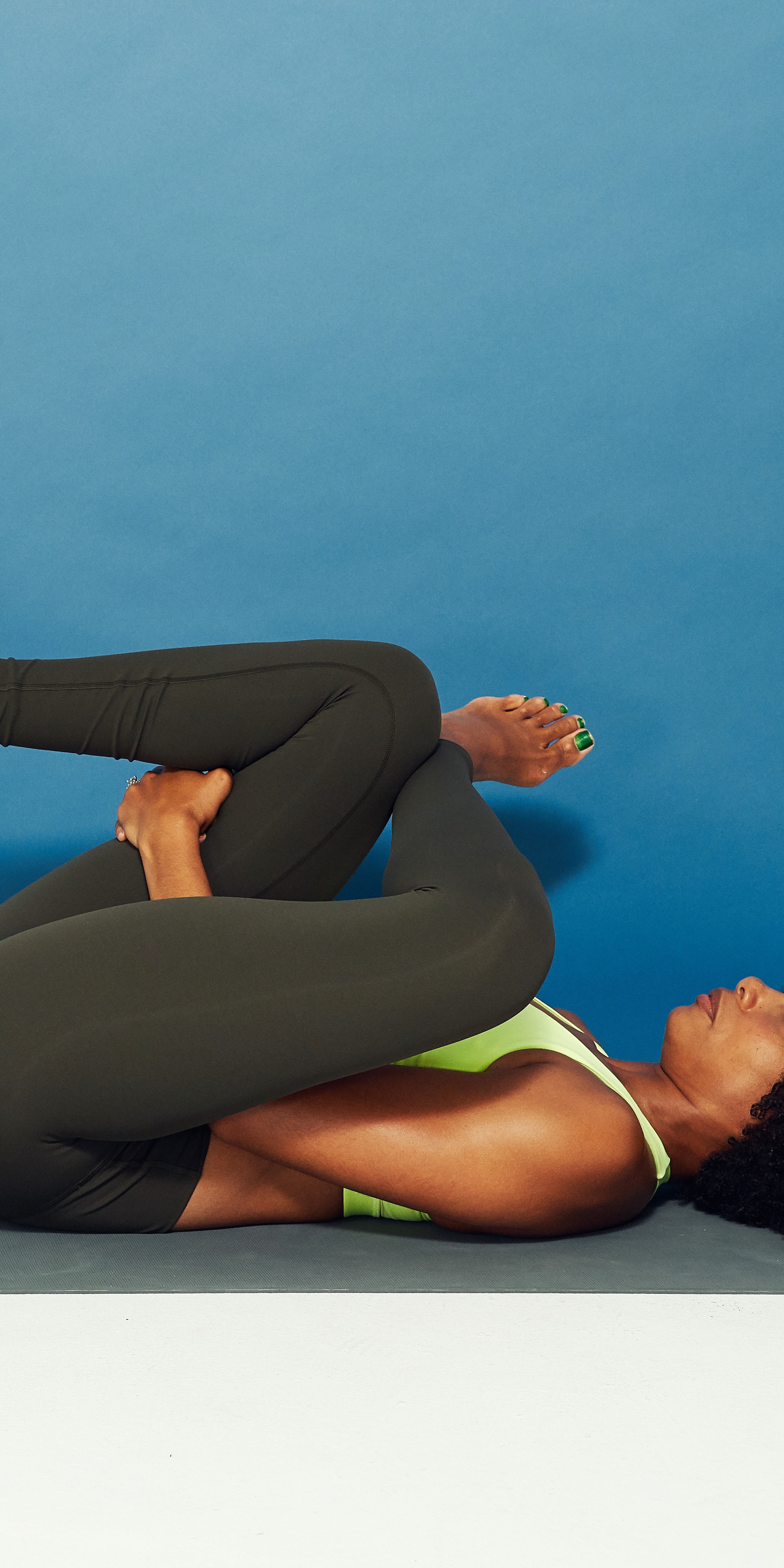
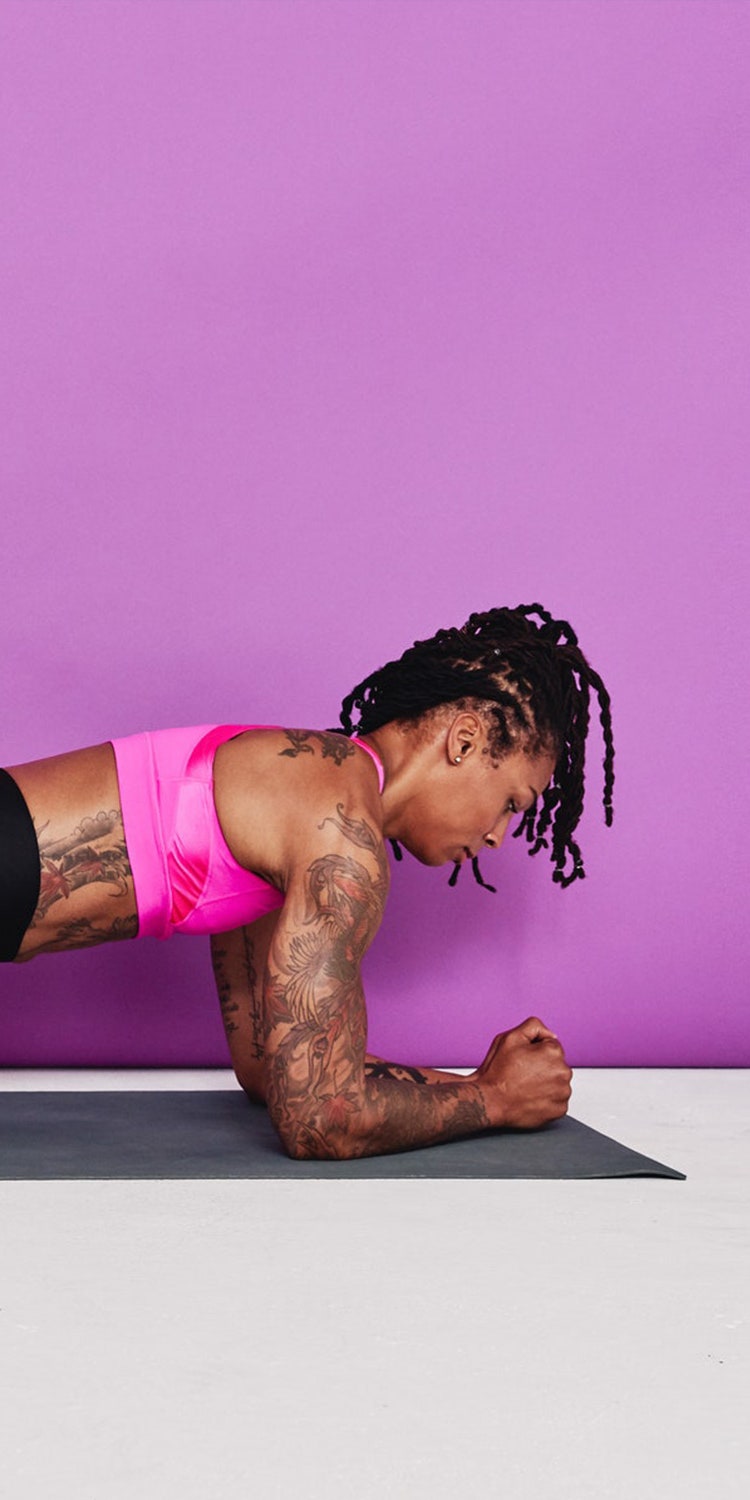
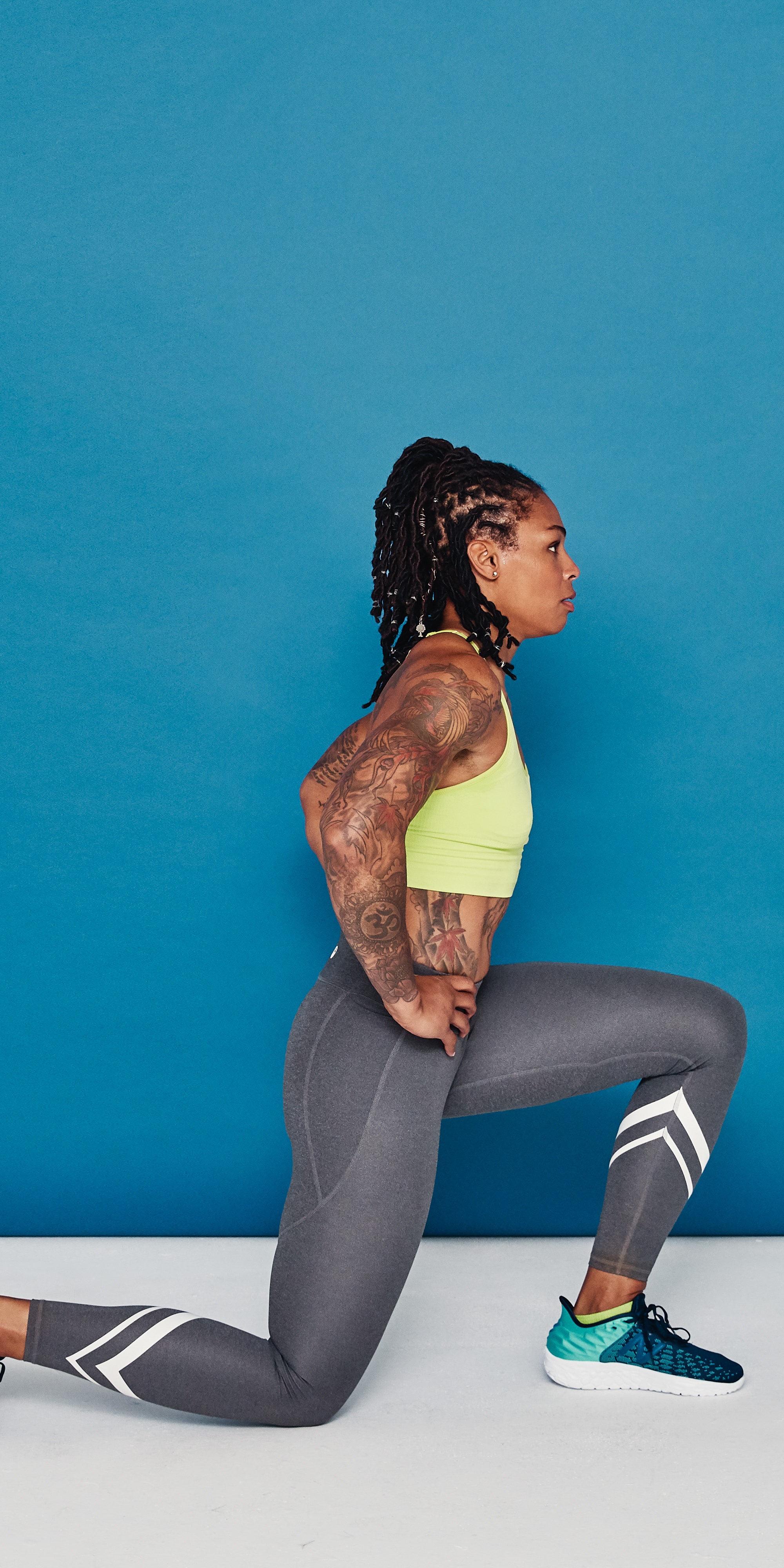
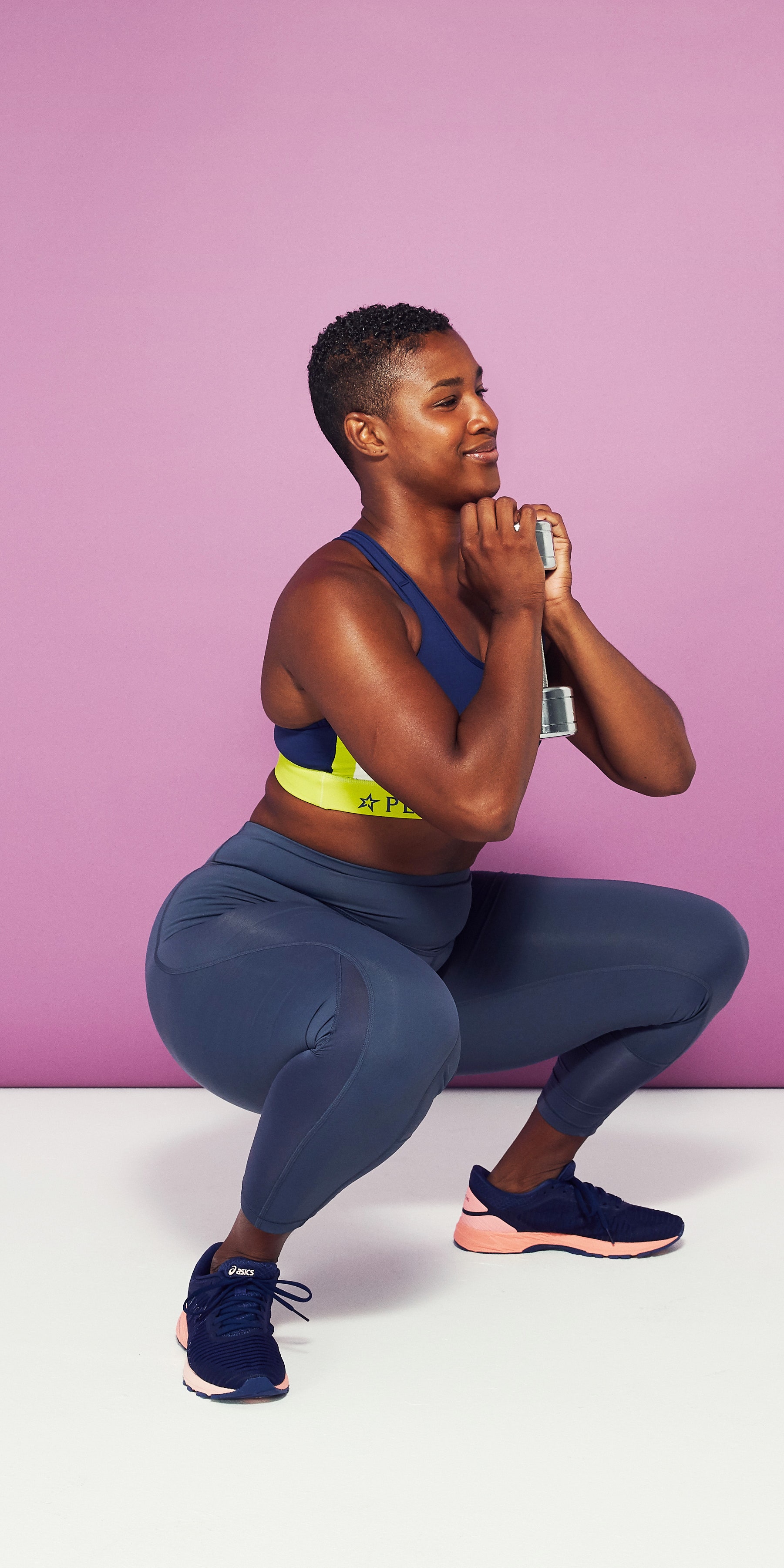
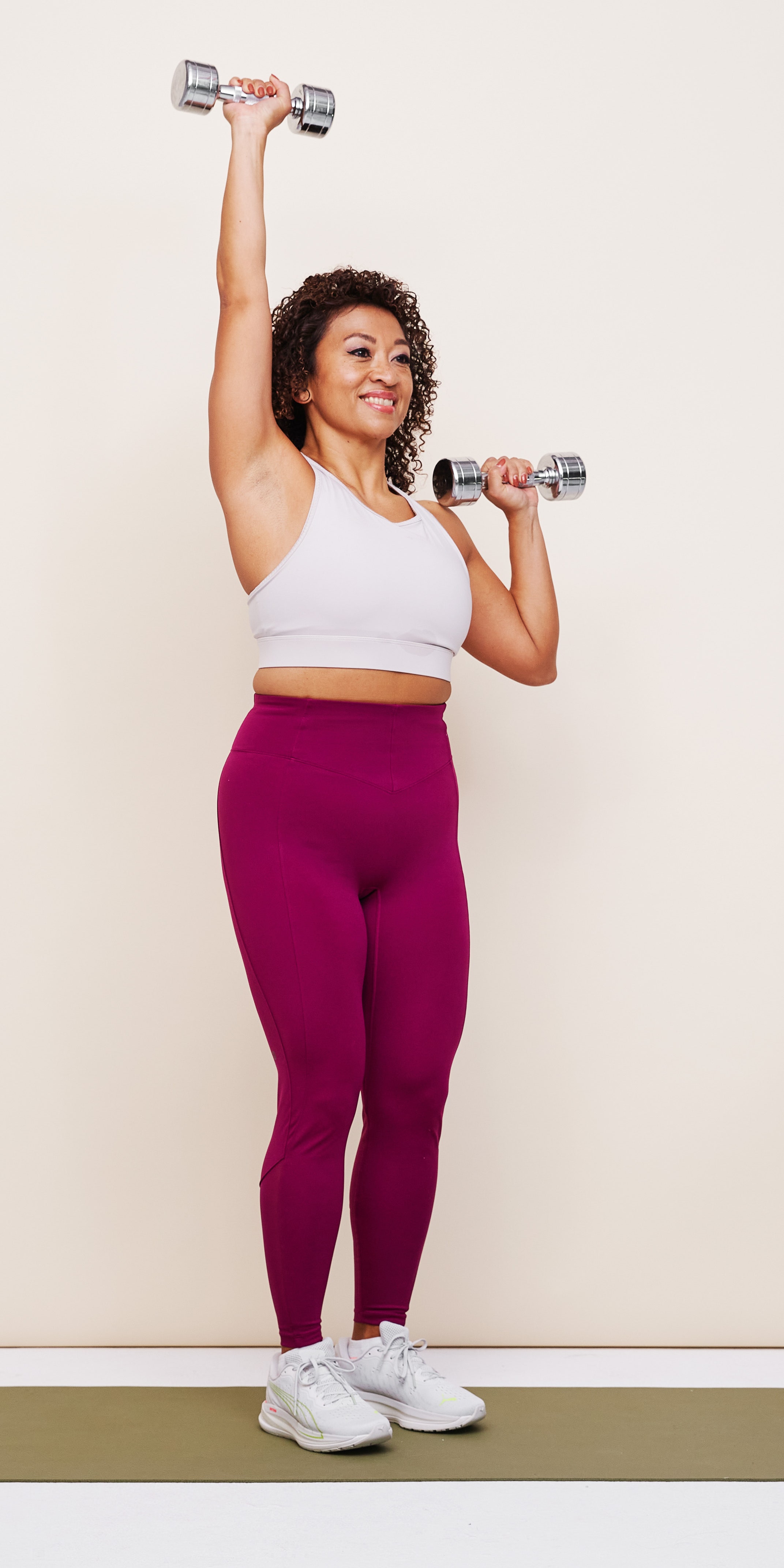
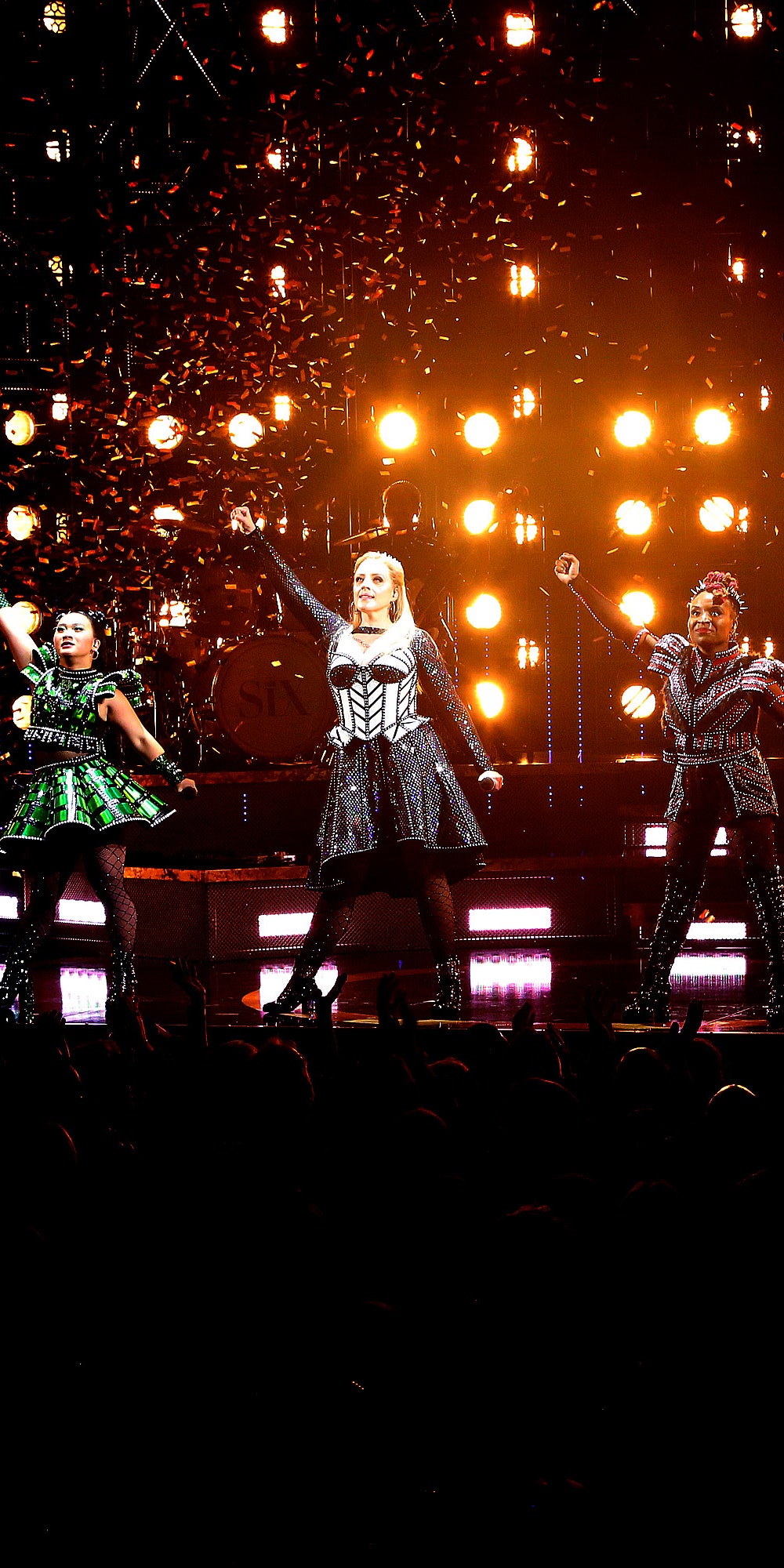
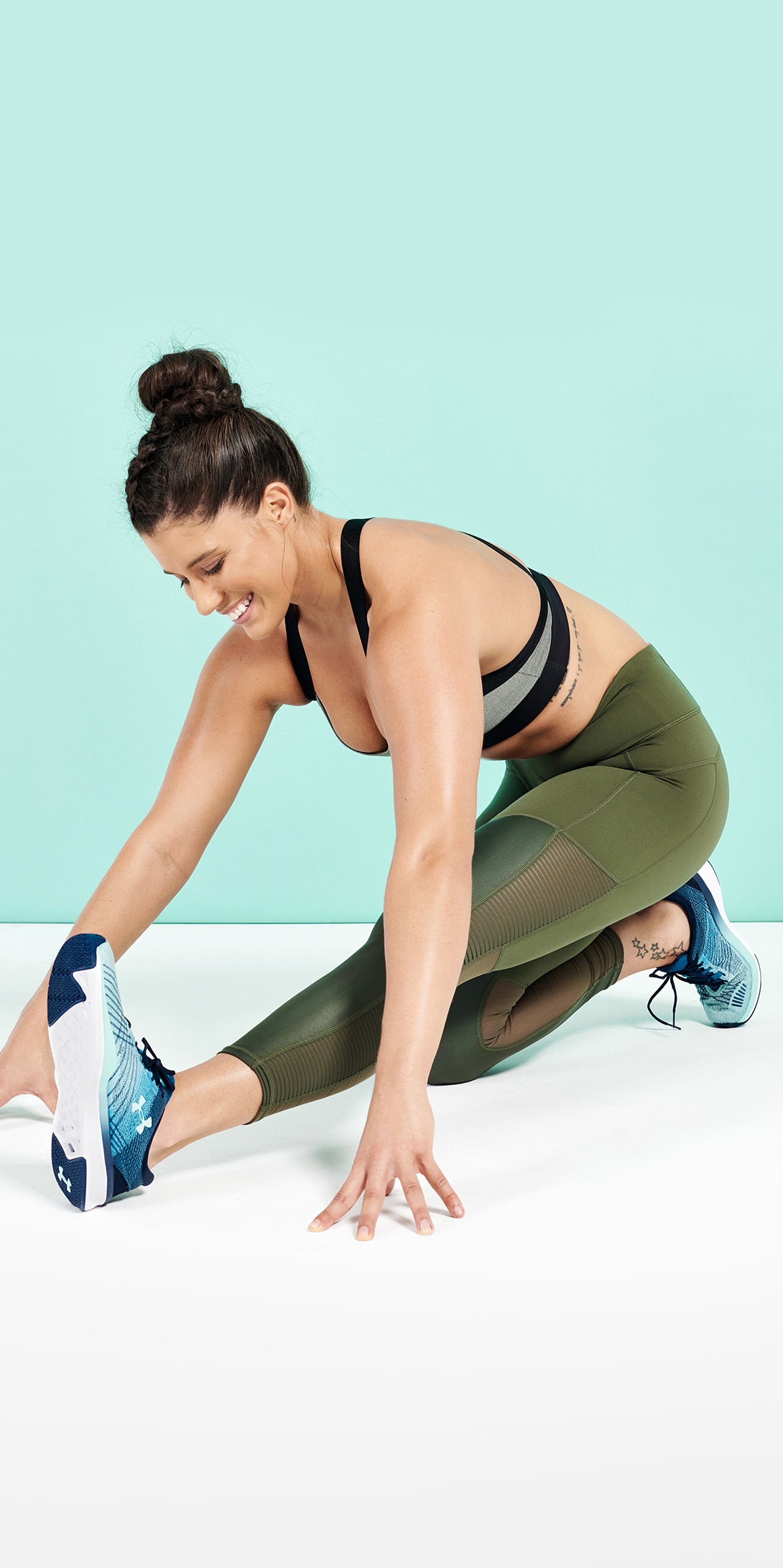
Leave feedback about this